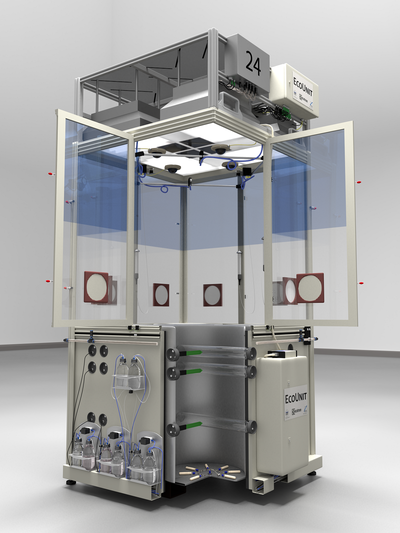Setup & Design
Dimensions & Segmentation
EcoUnits are experimental chambers comprising a bottom part (‘belowground part’), an upper part (‘aboveground part’), and a technical part on the top.
The upper part is equipped with lighting, ventilation, and irrigation installations as well as the control cabinet.
The aboveground part provides sufficient space for the growth of herbaceous plants and tree saplings and creates the preconditions for developing complex interaction networks of plants and a wide range of invertebrates.
The belowground part can be filled with up to 1.23 m3 of soil or alternatively can be equipped with four steel cylinders (lysimeters of 0.5 m in diameter) each holding 0.16 m3 of soil.
The EcoUnits can be divided into four belowground compartments using the lysimeters and into four equally sized aboveground segments using mobile interior walls. Each EcoUnit can thus be separated above- or belowground, or both, creating four separated chambers between which organisms and materials cannot exchange. Each quarter has its own lighting, irrigation, and ventilation system as well as permanent measurement equipment. In this way, up to four different treatments can be implemented in each EcoUnit. With the lysimeters, it is possible to excavate intact soil monoliths directly from the field, which then provide a natural, undisturbed ecosystem for belowground organisms.

